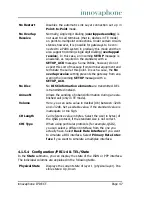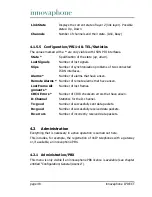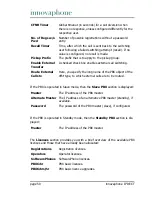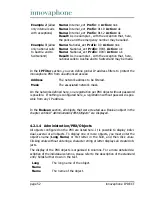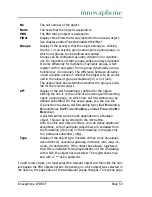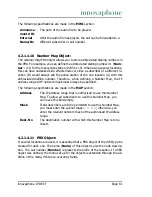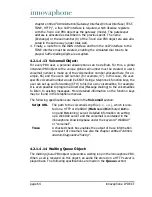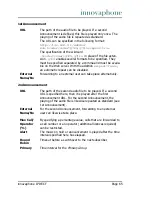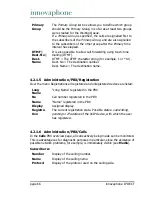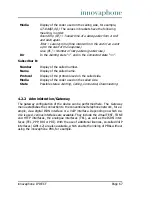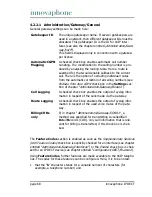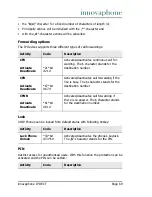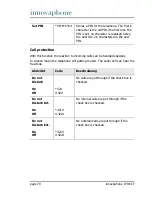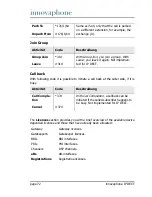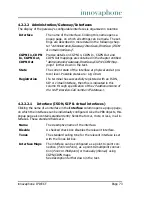
page 60
innovaphone IP DECT
4.2.1.4.9
Message Waiting Object:
The
Message Waiting
PBX object was implemented to integrate external applica-
tions of other manufacturers (voicemail solutions) in the innovaphone PBX. Since
some applications do not support the transmission of so-called MWI messages
(LED on/off), the status regarding whether a message for a particular object
exists is lost if say an MWI-enabled VoIP telephone is restarted.
The MWI object in the PBX is able to note the status for every object. For this,
however, the external application (voicemail) must be prompted to send the cur-
rent status for the individual user to the innovaphone PBX via H.450.7. The H.323
SETUP message must also be sent the call number of the relevant subscriber, or
otherwise the PBX does not know which subscriber the MWI message should be
sent to.
The status can also be sent using DTMF. Dazu muss einfach nur die Rufnummer
des MWI-Objektes (z.B.: 20) gefolgt des entsprechenden DTMF-Code gewählt
werden:
201 - Sends the MWI message, MWI LED on
202 - Sends the MWI message, MWI LED off
Furthermore, in the case of a call to this object, an audio file in the relevant coder
format that is stored on a HTTP server can be played or even forwarded to a dif-
ferent subscriber.
Multicast
Port
A port must also be specified. It can be any port of your
choice.
Coder
The coder to be used for multicast calls can be selected here.
You can select from the following:
G729, G711A, G711u
and
G723
.
Packetiza-
tion (ms)
Reduces the protocol overhead, thereby increasing the band-
width available for voice data. Bear in mind that the overhead
grows significantly with reduced packet size, since the per-
packet transport overhead (IP protocol in LAN and additio-
nally PPP protocol in WAN) remains the same while the voice
data payload becomes less.
Call Busy
Endpoints
Calls are also signalled on the phones of subscribers who are
currently phoning and are therefore busy, if this check box is
checked.


